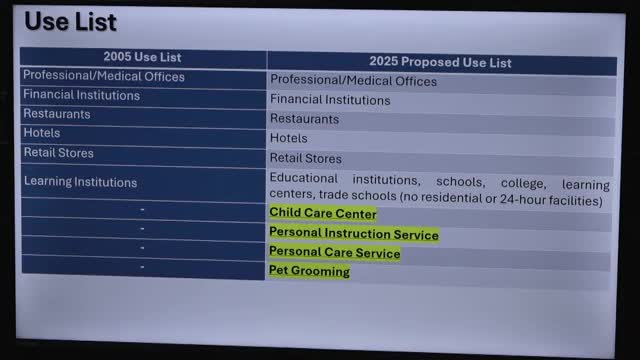Bloomington Council approves new uses and signage changes for Sunriver Commons
May 03, 2025 | St. George City Council, St. George, Washington County, Utah
Thanks to Excel Chiropractic and Scribe from Workplace AI , all articles about Utah are free for you to enjoy throughout 2025!

This article was created by AI using a video recording of the meeting. It summarizes the key points discussed, but for full details and context, please refer to the video of the full meeting. Link to Full Meeting
One of the primary topics was the proposal to expand the permitted uses in the Bloomington Courtyard Business District. Since the use list has remained unchanged since February 2005, the council considered adding four new services: childcare centers, personal instruction services, personal care services, and a modified learning institution. This initiative aims to better serve the community and nearby residents, with council members expressing support for the changes, highlighting the importance of bringing essential services closer to home.
The council also reviewed an amendment to the Sunriver Commons master sign plan, which includes the addition of two new electronic message signs. The proposed changes sparked considerable debate, particularly concerning the potential impact of electronic signage on local residents. Concerns were raised about brightness and visual distractions, especially for those living nearby. The planning commission had previously recommended approval of the changes, incorporating conditions to mitigate brightness and ensure that the illumination does not exceed that of existing static signs.
Council members discussed the need for standards governing electronic signs, particularly regarding the duration of displayed messages. The current ordinance stipulates an eight-second interval for message changes, a regulation that some council members and the applicant argued may be too restrictive. They suggested that allowing more flexibility could benefit local businesses while still addressing community concerns about light pollution and visual distractions.
The meeting underscored the balancing act the council faces in fostering economic development while protecting the quality of life for residents. As the city continues to grow, the decisions made in these discussions will likely shape the community's landscape and its residents' daily experiences.
In conclusion, the St. George City Council's recent meeting highlighted the ongoing efforts to adapt local regulations to better serve the community's needs. The proposed amendments to the permitted uses and signage regulations reflect a commitment to enhancing local services while addressing the concerns of residents regarding commercial developments. As these proposals move forward, the council will need to carefully consider the implications of their decisions on both the business environment and the quality of life for St. George residents.
Converted from St. George City Council May 1, 2025 meeting on May 03, 2025
Link to Full Meeting
Comments
View full meeting
This article is based on a recent meeting—watch the full video and explore the complete transcript for deeper insights into the discussion.
View full meeting
